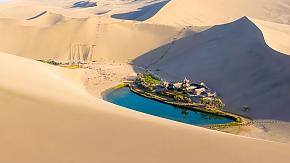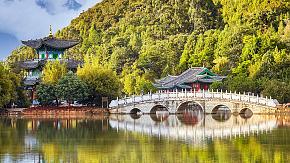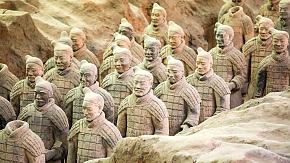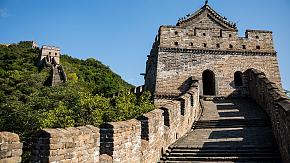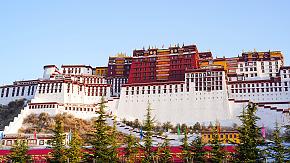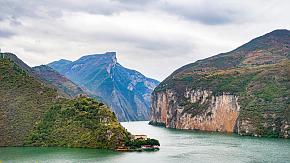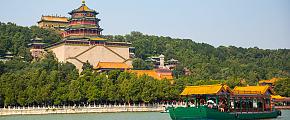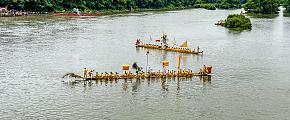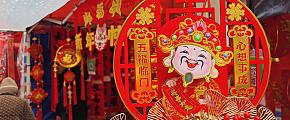Top 10 Cultural Heritage Sites in China
China has developed a profound cultural heritage over the past 5,000 years of architecture, museums, sculptures, paintings, martial arts, etc., forming numerous cultural wonders that still take everyone's breath away and attract the world's attention.
With so many cultural wonders to visit, you must be wondering where to start. Here are the top 10 cultural heritage sites recommended for your China tour.
Great Wall of China
The Great Wall is a complete defense system composed of various fortifications such as walls, passes, beacon towers, and fortresses to defend against invaders from the north. It is made up of multiple sections built by different monarchs from China's Spring and Autumn Period (770-476 BCE) to the Qing dynasty (1636-1912 CE), winding for about 13,171 miles through 15 Chinese provinces, municipalities, and autonomous regions, creating one of the best-known cultural heritage sites of the world.
Since the Great Wall comprises numerous sections, visitors have to decide which sections to visit before setting out. Different sections show their distinctive features. The Mutianyu Great Wall in Beijing is one of the prettiest sections open to visitors and typically represents the majestic appearance of the Great Wall of China, extending north and south through the mountains and hills, with no end in sight. As it is quite a long stretch at almost 5400 meters, you can also choose a cable car to start an easy visit.
Jinshanling in Hebei is the best-preserved section of the Great Wall, home to the world's most difficult marathon, and every April you can see more than 6,000 hectares of wild apricot blossoms. Jiankou in Beijing is untouched and wild and is a paradise for outdoor enthusiasts, but due to its primitiveness and steepness, it is recommended to follow a professional outdoor team and come with sufficient equipment.
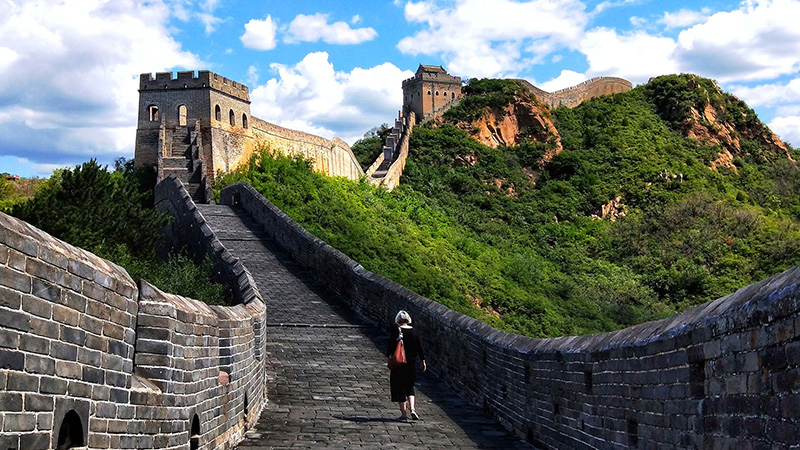 The Great Wall of China
The Great Wall of China
Forbidden City
Located at the heart of Beijing, this imposing masterpiece stands as the largest palace complex and most visited museum in the world, covering a total area of more than 72 hectares, with over 90 courtyards and more than 1.86 million pieces of art.
As the former seat of power for five centuries of imperial China and the residence of 24 emperors and their families during the Ming and Qing dynasties, this breathtaking museum is the best place to appreciate the solemn, magnificent, and priceless Chinese dynastic wonders.
From the moment you step into the cultural heritage site of Forbidden City, you will be in awe of the undulating architecture that carries the ups and downs of the imperial dynasties. Everything around you speaks of its majesty, grandeur, elegance, and refinement. Taihe Hall has red walls and yellow tiles, with eight sacred animals representing good fortune on its eaves, and various delicate fish patterns depicted on the vermillion windows and dragon pillars. Qianqing Palace, with its glorious decorations, was where the ancient emperors rested and slept, and you can see the two jade pillows on the bed. Zhenbao House has a collection of countless imperial treasures, such as gold and silver vessels, pearls and jade carvings.
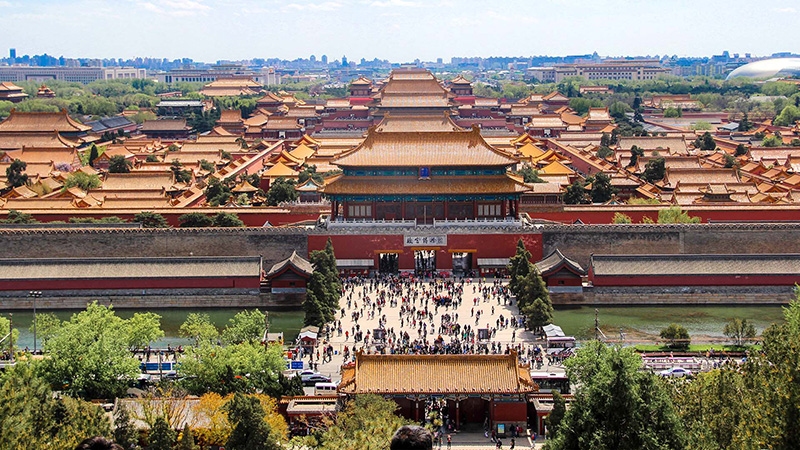 The Forbidden City
The Forbidden City
Terracotta Army
The cultural heritage site of Terracotta Army, one of the most mysterious and sprawling tableaus of sculptures in the world, is part of the elaborate and grand underground mausoleum of Qin Shi Huang, the first Qin emperor.
The army has thousands of life-size terracotta warriors positioned in particular military formations and equipped with well-preserved bronze weapons, along with chariots and horses. Before this astonishing ancient site was discovered in 1974, it had remained undisturbed underground for about 2,200 years in Xi'an, Shaanxi province.
Up close, you will see the formations of different ranks of generals and soldiers, their clothing, and equipment. Get closer, and you will be amazed at how meticulously they were carved. Each warrior was designed with a unique face and hairstyle, and even the stitches of their soles have been carved out. Each warrior presents different characters and moods. You can feel that some of them are wise and calm, some are brave and competent, and some are missing home.
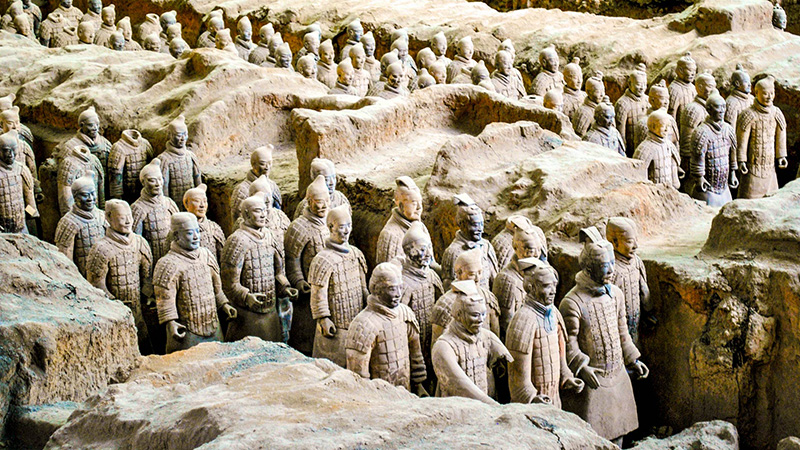 Terracotta Army
Terracotta Army
Leshan Giant Buddha
Standing at 233 feet in height, the Leshan Giant Buddha is the world's tallest stone Buddha carving heritage site, chiseled into the cliff of Mount Lingyun at the confluence of the Dadu, Qingyi, and Min Rivers in Sichuan Province.
Despite more than 1,200 years of weathering, the Buddha still towers over the mighty rivers. The ingenious drainage system hidden behind its two ears and head, together with the channels and caves over its hair, chest, back, and arms, protects it from erosion.
No matter from which angle you look at this Buddha, from a side of the cliff or a distance, the shock it brings you is unparalleled. Its feet alone can hold a hundred people. When you stand at the foot of the Buddha, with the long stretches of rivers in front of you, the endless mountains covered with emerald green trees behind you, and this carved marvel that has weathered the millennia alongside you, you will be deeply moved like never before and will remember the experience for a long time.
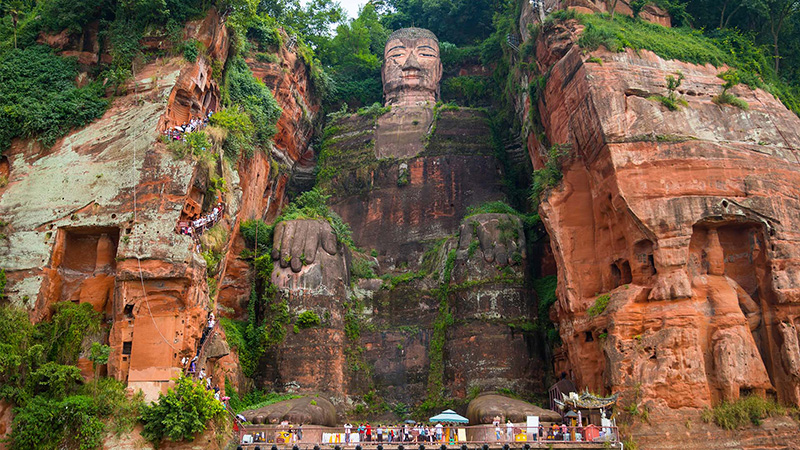 Leshan Giant Buddha
Leshan Giant Buddha
Potala Palace
At 12,139 feet above sea level in Lhasa, Tibet, the Potala Palace climbs up to the top of the Red Mountain, covering a total area of over 3.87 million square feet. This 1,300-year-old sacred complex cultural heritage site comprises the White Palace, where the successive Dalai Lamas have lived, and the Red Palace, where the burial stupas of past Dalai Lamas were erected.
The Potala Palace boasts more than 26,900 square feet of murals, nearly 1,000 stupas, tens of thousands of statues and scrolls rich in themes and styles, and numerous historical documents, establishing itself a reputation as the museum of Tibetan history. The golden Tibetan burial stupas of past Dalai Lamas and the huge art gallery of wall paintings mostly created by masters are among the most impressive works.
Potala Palace also owns the most beautiful start of one day. There are always people waiting in the cold wind hours in advance for the first ray of sunshine in the morning, and the moment it appears, you will feel the sky is within reach.
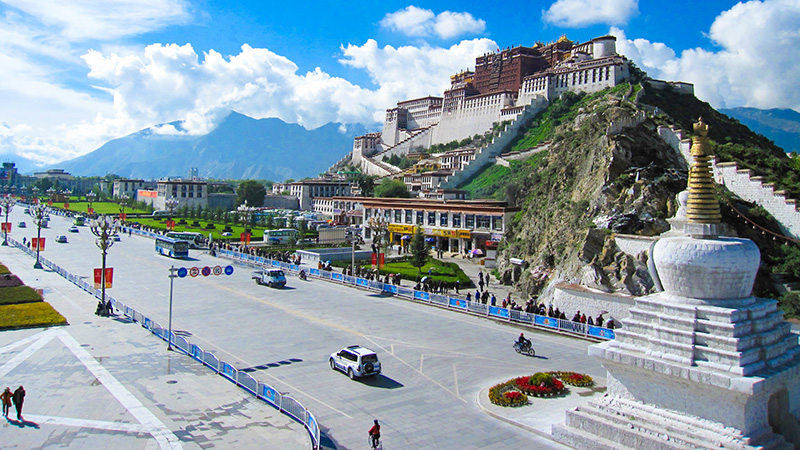 Potala Palace
Potala Palace
Mogao Caves
The construction of Mogao Caves spanned about 1,000 years, with its first caves carved in 366 CE at Dunhuang, Gansu Province.
The Mogao Caves Cultural Heritage Site comprises 735 caves and boast more than 480,000 square feet of murals and over 2,400 painted sculptures. It is the world's largest and best-preserved treasure trove of Buddhist art, known as the Pearl of Oriental Art, and also a microcosm of the evolution of Chinese cave art.
Through these caves, you can see the change of dynasties, each of which has left its masterpieces here. The murals in the caves form a thousand-year history of painting, and because more than 200 groups of murals are about music, involving over 40 kinds of musical instruments, the murals also speak a thousand-year history of music. Such continuous and authentic records of art history are something you don't see in other museums around the world.
Don't miss the 52.48-foot sleeping Buddha in Cave 148 and the largest Buddha sculpture here (108.24 feet tall) in Cave 96, both masterpieces of Dunhuang's heyday of painted sculpture.
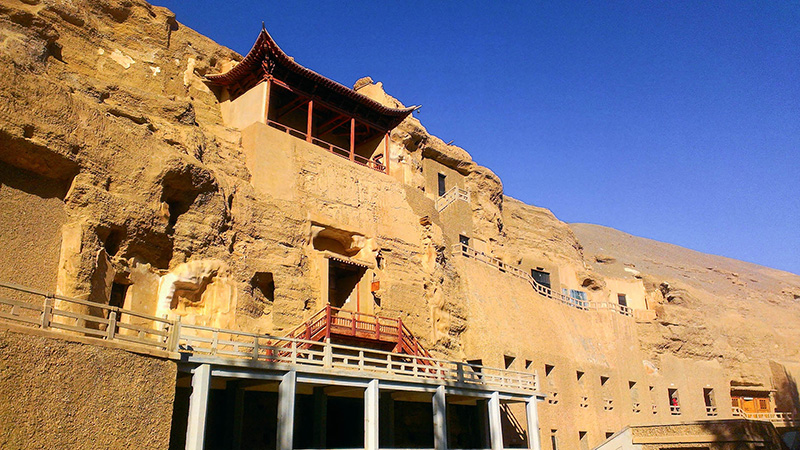 Mogao Caves Cultural Heritage Site, Dunhuang
Mogao Caves Cultural Heritage Site, Dunhuang
Shaolin Temple
Shaolin Temple, reputed as the Number One Temple under Heaven, is located at the foot of Wuru Peak of Song Mountain in Henan Province, surrounded by forests and well-known peaks.
Founded in 495 CE, Shaolin Temple is not only the birthplace of Zen Buddhism and a crucial Buddhist site but also one of the cradles of Chinese Kung Fu. There is no better place to see a real Kung Fu performance than here, and the show that lasts about 30 minutes will give you a glimpse of the power of Shaolin Kung Fu.
It is also a great place to enjoy the beauty of the mountains and forests surrounding this cultural heritage site. Song Mountain, where Shaolin Temple is located, is a world geological park with unique and diverse geological formations and 72 famous peaks. You can take a cable car to enjoy its grandeur or hike up the mountain and feel its ups and downs with your feet.
Kashgar Old City
The Kashgar Old City, situated at the Tarim Basin, has a reputation as one of the largest surviving earthen architecture complexes in the world and has been the most representative historical and humanistic landscape in Xinjiang.
With more than 2,100 years of history, the cultural heritage site of Kashgar Old City has always remained vibrant. Located right at the crossroads of the center of the Eurasian continent, the Kashgar Old City, for centuries, has been a distribution center for goods between China and the West.
This maze-like city, with a flexible and varied layout, draws itself about two or three hundred intersecting streets and alleys. You can wander unplanned and stop at a tea house, bar or stall you are interested in, listening to Uygur music and watching the flowers and greenery sway in the wind. If you enter the stores, it is always difficult to make a quick choice due to the abundance of precious handicrafts. The copper crafts are made by pure hand with brilliance and exquisite craftsmanship. The silk is dyed using the ancient process, and the colors are known for their vividness.
Three Confucian Sites
Throughout the ages, Confucians have commemorated and worshiped Confucius, honored as "the sage of sages," in the cultural heritage site of Three Confucian Sites, which comprises the Temple of Confucius, the Kong Family Mansion, and the Cemetery of Confucius in Qufu, Shandong Province.
The Temple of Confucius was converted from the former residence of Confucius and has undergone dozens of alterations and expansions through successive dynasties. Its astonishing painted buildings, corner towers, carved beams, monuments, and inscriptions make your sightseeing no end.
The Kong Family Mansion ranked as the second largest mansion in China after the palace of the Ming and Qing emperors, and it is the long-standing residence of the direct descendants of Confucius. In its garden stands an imposing cypress tree, which is nearly 400 years old.
The Cemetery of Confucius is the largest artificial forest in China, with more than 100,000 trees and hundreds of species of plants. After Confucius' death, his disciples brought exotic flowers and trees from all over the country to Confucius' tomb to commemorate him, gradually forming today's forest.
Old Town of Lijiang
Located in Yunnan Province, 7,874 feet above sea level, the cultural heritage site of the Old Town of Lijiang is perfectly integrated into the surrounding mountains, rivers, and trees.
The biggest feature of Lijiang Old Town is the water and bridges, with its main street by the river and alleys by the canal. The ancient street is one of the characteristics of the old town, paved with red conglomerate having natural and elegant patterns, complementing the whole town.
When you are in the old town, you would feel happy and relaxed simply by wandering around, stepping on the cobbles in the streets, walking across a bridge over the water, or touching the willow trees everywhere. The old town has the magic of removing all your worries and irritations.
The ecological layout, timber and tile architecture structures, time-honored arts and crafts, and well-preserved surroundings combine to show you the harmonious co-existence of man and nature here. Visitors can still see the ancient water-supply network of canals, springs, and wells, built up following the natural topography.
Explore Cultural Wonders in China with Odynovo
These 10 cultural heritage sites are located in various regions of China from east to west and south to north. You will be deeply impressed by the richness of Chinese culture and fall in love with it. Odynovo will be your best travel advisor to make a cultural trip to China. We will customize the best travel plan for you and take care of everything so that you can enjoy your trip to the fullest. You can also get more inspiration from the article "World's Best Destinations for Cultural Tour".
Quick Question
What Our Clients Say
Explore the latest verified reviews of Odynovo's travel services on Tripadvisor, Google, Trustpilot, Product Review and more trusted platforms.

